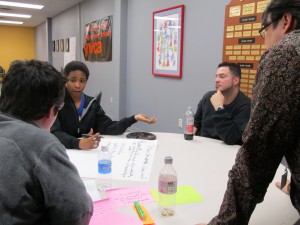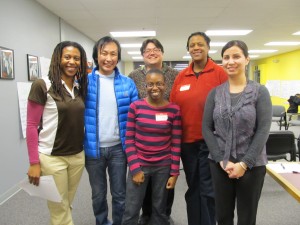Imagine being born into a community where you thought you were like everyone else and then, upon realizing that you were different, doing everything you possibly could to deny and distance yourself from it. Imagine coming of age in a community in which there seemed to be no adult role models who shared your experience of the world. Imagine having to pretend you were someone you weren’t in order to get a job. Or silencing yourself from speaking the truth of your experience for fear that you will be marked as “angry,” “radical,” or otherwise “out of place.”
If you identify as lesbian, gay, bisexual, or transgender these scenarios shouldn’t be too difficult to imagine. They are central to the collective experience of being LGBTQ , to our talk of “closets,” and “coming out,” and our arguments for why we need protection from discrimination. But when LGBTQ people of color gathered earlier this month to discuss our experiences living in Alaska, we discovered that they were also central to the experience of growing up and living as a person of color in Anchorage and surrounding areas.
Participants were from a variety of different backgrounds—mixes of Aleut, Athabascan, Tlingit, African-American, Afro-Cuban-Puerto Rican, Japanese, and European. They were lesbian, bisexual, and gay, parents, professionals, public officials, and students. Some were just stepping into adulthood or out of the closet, others were moving toward middle-age with humor and grace or had been out for a decade or more.
Co-sponsored by Pride Foundation, First Alaskans Institute (FAI), the dialogue was just one of a series of conversations being sponsored by FAI’s Alaska Native Dialogues on Racial Equity (ANDORE), a project that has its aim to “raise the level of awareness and healing around race and racism,” and “to advance policy solutions towards racial equity in Alaska.” But for us, creating a safe space for LGBTQ people of color meant framing the discussion in such a way that invited participants to speak from whatever aspect of their experience they chose rather than forcing them to choose between their LGBTQ and racial experiences.
“It was good to be in a space where I could wear my Native hat and my gay hat at the same time,” said one participant.
“I didn’t know what I would be expected to contribute,” another participant confessed during the closing circle. “But now I know that just being here is a contribution.”

The creation of this open space allowed us to not only discover similarities between our experiences—in spite of our age and ethnic differences—but also to more clearly see the parallels between coming of age as a person of color in a predominately white world and coming of age as an LGBTQ person in a predominately straight world. Just as we choose to “come out” as gay, bisexual, or transgender to new people on a daily basis, so do some of us also choose to “come out” as Alaska Native or to make our physical race even more visible by voicing our experiences as African-Americans rather than silencing ourselves.
As the first dialogue of its kind and only three hours to work with, we didn’t come up with more than superficial suggestions for how we could create a community that would allow for LGBTQ people and people of color to live without fear, without internalizing the negative messages we hear about ourselves, and to feel free to bring our full selves to everything we do. Most of us were strangers to one another before that night and we needed time to simply affirm each other’s experiences. In the end, there were only three things we knew for sure: 1) it was a dialogue that needed to happen 2) none of us were alone and 3) We were just getting started.
If you’re interested in participating in a similar dialogue or just being connected with other LGBTQ people of color in Alaska, please e-mail Tiffany McClain at tiffany@pridefoundation.org
